Family Caregivers: An Untapped Resource in Value-Based Care
// By Marlene Kurban //
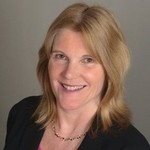 More than 50 million Americans — one in five — provide unpaid care for their loved ones valued at $950 billion annually. But their contributions to reducing the total cost of care are often overlooked and undervalued by health systems.
More than 50 million Americans — one in five — provide unpaid care for their loved ones valued at $950 billion annually. But their contributions to reducing the total cost of care are often overlooked and undervalued by health systems.
As the shift to value-based care gains momentum and more health systems participate in accountable care organizations and hospital-sponsored Medicare Advantage plans, management of services related to seniors and their caregivers has great potential to improve quality and cost of care — and positively impact the bottom line.
In the recent Strategic Health Care Marketing webinar, “How Integrating Family Caregivers into the Care Team Adds Value to Value-Based Care,” moderated by Dan Ansel, CEO of Active Daily Living, a panel of experts discussed the implications of rising demand for caregiving as the population ages. Alexandra Drane, co-founder and CEO of ARCHANGELS; Dr. Rick Martin, chief medical officer for the Keystone Accountable Care Organization and medical director of LIFE Geisinger; and Julia Evans Starr, president of Connecticut Community Care, shared their organizations’ policies and best practices to support seniors and leverage family caregivers as vital members of the care team.
The Need for a Family Caregiver Focus
Family caregiving is an emotionally charged issue that creates an opportunity for providers to create highly engaged and valued relationships.
Geisinger has tangible proof that support for families in the community is a winning formula. Its LIFE program has cut the total cost of care for enrolled patients in half.
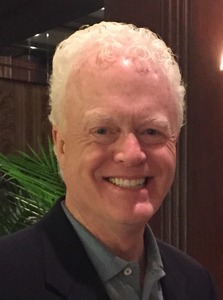
Dan Ansel, CEO, Active Daily Living
“Caregivers are taking on an increasingly important role, but our research shows that they often feel unappreciated and unsupported when they’re interacting with the health care delivery system,” says Dan Ansel. “They share similar goals as their aging loved one: maximizing health, maintaining independence, engaging with life, and being safe while aging at home. But we found interesting results when we did a Google search in terms of hospitals and caregivers, family caregivers, and health care. There are over 10,000 hospitals in the United States, but only 25 came up on a search of some combination of ‘hospital and family caregivers.’ Fewer than 230 hospitals came up in a search using the term ‘hospital senior services.’”
“And therein lies the opportunity,” states Alexandra Drane. “Unpaid caregivers are an untapped resource.” In a survey conducted by Drane in collaboration with Dr. Nirav R. Shah, published by the New England Journal of Medicine, 83 percent of health care executives, clinical leaders, and clinicians said that unpaid caregivers should have a seat at the table and be part of the care team, but only 23 percent said they actually were.
Caregiver Stress
The statistics are frightening: Of the 23 percent of Americans who are caregivers, 85 percent report experiencing at least one adverse mental health impact, specifically anxiety, depression, or suicidal ideation.
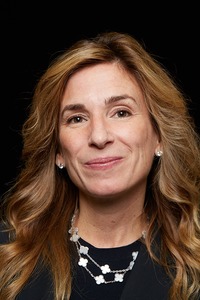
Alexandra Drane, co-founder and CEO, ARCHANGELS
“For those unpaid caregivers of the sandwich generation, 52 percent report they’ve had serious suicidal thoughts because of their caregiving role,” notes Drane. “That’s one in ten American adults. Unpaid caregivers also more likely to be from communities that have been disproportionately impacted by the pandemic. They’re more likely to be Black or Hispanic, are likely to be young and employed, they’re more likely to be living with a disability than others who aren’t caregivers, and the majority are essential workers.”
Drane adds that caregivers who have greater support have lower odds of experiencing adverse mental health symptoms. The ARCHANGELS Caregiver Intensity Index (CII) helps caregivers identify their sources and level of stress and crosswalks them to resources they need, from financial advice to adult day care.
“Every single state has resources for unpaid caregivers,” says Drane. “If your organization doesn’t have services for caregivers, at least direct them to the free resources that exist.”
LIFE Geisinger: Senior-Focused Care
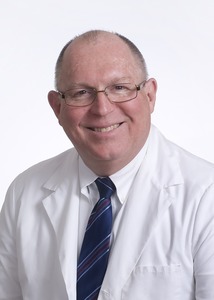
Dr. Rick Martin, chief medical officer, Keystone Accountable Care Organization and medical director, LIFE Geisinger
In addition to serving as the chief medical officer for Keystone Accountable Care Organization, Dr. Rick Martin is also the medical director for LIFE Geisinger, a program with specialized services designed to support eligible seniors to live independently. Sponsored by Medicaid and Medicare, the LIFE programs enable frail and vulnerable seniors to stay in their homes and communities. Half of the patients are referred by Geisinger’s primary care practices, and half are referred by other medical providers, social services agencies, churches, and housing authorities.
“I think of this program as a nursing home without beds. Each of our centers consists of a large community room where people socialize and partake of a wide variety of activities. We also have a medical clinic so we can do minor surgical procedures, IV medications, and other types of treatment, as well as an area for physical and occupational therapy,” says Dr. Martin. “Our interdisciplinary team of social workers, a full nursing staff, home care staff, a nutritionist, and physical and occupational therapists strives to keep people well and keep them out of the hospital.
“Our data on medical utilization shows the total cost of care is 50 percent less compared to the cost of care for these patients in regular primary care practices.”
Dr. Rick Martin
LIFE Geisinger“Most important, we give support to the patient’s family and reprieve for caregivers. While we can provide most of the services within the centers, we can also provide support services in patients’ homes. For example, the patient might need an hour or two of service in the morning to get them up and going, or perhaps someone to provide lunch if they choose not to come to the center that day, or they might need someone to come in the evening to help them get ready for bed.”
The results are impressive, with patient and caregiver satisfaction rated at 95 percent good/exceptional.
LIFE Geisinger helps eligible seniors live in the community with support. Teaming up with family caregivers eases the burden on the health system as well as on families.
“Our data on medical utilization shows the total cost of care is 50 percent less compared to the cost of care for these patients in regular primary care practices,” says Dr. Martin. “Hospital inpatient admissions are also trending down.”
Supporting Patients at Home
Connecticut Community Care, a nonprofit care management agency, works primarily with Medicaid waiver programs, Money Follows the Person, Community First Choice, and some service arrangements with other public and private entities. Care managers conduct comprehensive assessments of individuals’ needs, develop a care plan, and connect them with community supports and in-home services. Caregivers are an essential part of the equation.
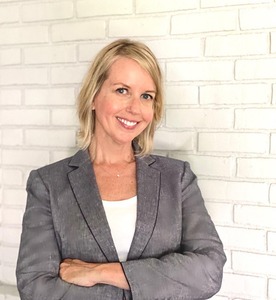
Julia Evans Starr, president, Connecticut Community Care
“Our mission is to support people within their homes and we work closely with families and caregivers,” says Julia Evans Starr. “Our clients are older adults and people with disabilities, many with functional and complex health and social services needs. We collaborate with government agencies, community-based organizations, hospitals, assisted living, and nursing facilities with the goal to mitigate the risks for our clients, help them avoid hospital and nursing home stays and have a good quality of life.”
“Since the pandemic, phone and videoconferencing have become a critical way to reach caregivers and engage them as part of the care plan,” Starr adds. “But there’s really no substitution for seeing someone in their home environment. The care manager can see how the person interacts with their caregivers, whether there’s food in the fridge, whether the home environment is safe, and so forth.”
A Paradigm Shift
Starr notes that the pandemic has transformed how care is provided, and a paradigm shift for long-term services and support has been significant.
“One of the shifts is that family caregivers really stepped up in a time that they were needed. More older adults were leaving nursing homes, preferring care in the community,” she states. “And while we’re hearing now that there’s an urgent need to address family caregivers, that they’re struggling, those of us who have worked on these issues for years know that the need has always been there. The caregivers have always been there, somewhat unrecognized and unsung. But if there’s a silver lining of the pandemic, perhaps it’s that we’re finally shining a spotlight on the need and necessity of our family caregivers.”
Marlene Kurban is a freelance writer with more than 20 years of experience in nonprofit management and the behavioral health care field.
